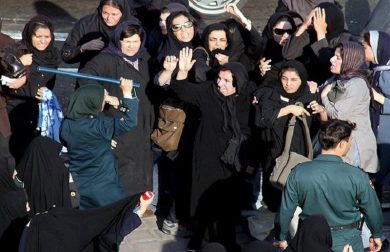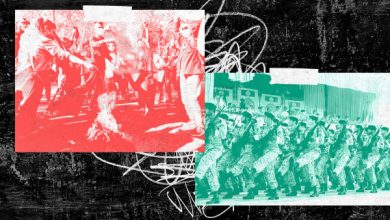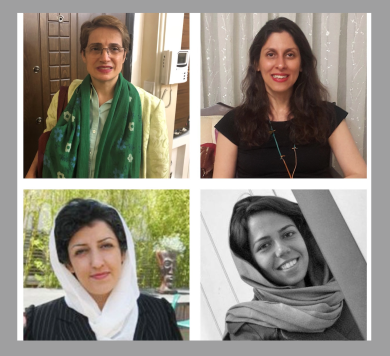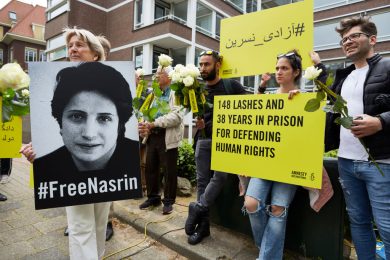In the Islamic Republic of Iran, the compulsory hijab is more than a piece of fabric—it is a powerful tool of state control, gender-based oppression, and political domination. For over four decades, the Iranian regime, enforced by the Islamic Revolutionary Guard Corps (IRGC) and its morality police, has used hijab laws to dictate how women appear in public, punishing those who dissent with fines, lashes, imprisonment, or worse.
But beneath this oppressive surface, an extraordinary movement has emerged—millions of Iranian women, from schoolgirls to grandmothers, are waging a quiet revolution through daily acts of defiance.
This opinion piece examines how compulsory hijab laws violate human rights, the role of the IRGC in enforcing them, and how women’s small, consistent acts of resistance are reclaiming bodily autonomy and redefining freedom.
1. The Compulsory Hijab: A Tool of Control
After the 1979 revolution, the Iranian regime moved quickly to impose Islamic dress codes, and by 1983, wearing the hijab in public became mandatory by law for all women and girls over age nine—regardless of religion, belief, or consent.
These laws:
• Treat women’s bodies as public property to be regulated.
• Enforce gender segregation and subordination in society.
• Symbolize loyalty to the regime, not piety or personal faith.
Women who refuse to comply are often:
• Fined, imprisoned, or fired from jobs.
• Denied access to education, healthcare, and justice.
• Subjected to physical violence and verbal abuse in public.
2. The IRGC’s Role in Enforcing Hijab Laws
The IRGC plays a central role in upholding the regime’s ideological grip, including the enforcement of gender-based laws. Through its affiliated forces such as Basij militias and morality police (Gasht-e Ershad), the IRGC:
• Conducts random street patrols, arresting women with “improper hijab.”
• Installs CCTV surveillance to monitor women in public and private spaces.
• Coordinates online crackdowns on influencers or celebrities not wearing the hijab.
• Forces public confessions on state TV to humiliate and deter others.
This system instills fear and conformity, but it is no longer working.
3. The Tipping Point: Mahsa Amini and the Spark of Rebellion
On September 16, 2022, Mahsa Jina Amini, a 22-year-old Kurdish woman, died in the custody of the morality police after being arrested for her “improper hijab.” Her death ignited nationwide protests, led primarily by young women who had lived their entire lives under hijab mandates.
Chanting “Woman, Life, Freedom,” protesters:
• Burned their headscarves in public squares.
• Cut their hair in mourning and defiance.
• Shared viral videos of resistance across the globe.
This movement transformed the hijab from a symbol of state authority to a symbol of women’s resistance.
4. Daily Acts of Defiance: Quiet but Powerful
Not all resistance is loud. In fact, most of it happens quietly, in the streets, classrooms, subways, and cafés. Women across Iran are refusing to comply with hijab mandates despite the risks. Their actions include:
• Walking unveiled in public as a deliberate political statement.
• Filming and confronting morality police during arrests.
• Supporting other women who are harassed.
• Wearing bright, expressive clothing as protest.
• Turning taxis and metros into forums for anti-hijab conversations.
Each of these acts is a micro-rebellion against state authority—and together, they form a massive cultural shift.
5. Why This Movement Matters
A. It’s About Choice, Not Just Cloth
The fight is not against hijab as a personal or religious choice—but against compulsory hijab, which strips women of their freedom to choose. Iranian women are demanding:
• The right to wear what they want.
• The right to define their own faith and identity.
• The right to exist in public without state permission.
B. It Unites Diverse Groups
This movement crosses boundaries of:
• Ethnicity – with participation from Kurds, Baluchis, Azeris, and Persians.
• Class – from urban elites to rural workers.
• Religion – including secular women, devout Muslims, Christians, Baháʼís, and others.
It is a unifying feminist revolution in a country long divided by the regime.
6. The IRGC’s Violent Response
Predictably, the regime and the IRGC have responded with brutality:
• Over 500 protesters killed, including women and children.
• Thousands arrested, many tortured or sexually assaulted in custody.
• Digital repression—hacking, doxxing, censorship, and surveillance.
• New legislation pushing for biometric monitoring and AI-based hijab enforcement.
But repression has only strengthened resolve. As IRGC violence increases, so does international attention and domestic defiance.
7. International Solidarity: Why the World Must Care
The fight against compulsory hijab is not just Iran’s fight—it’s a human rights issue with global implications. The world can support by:
• Amplifying Iranian women’s voices.
• Imposing sanctions on IRGC members responsible for abuse.
• Providing digital tools and internet freedom for protesters.
• Granting asylum and protection to women fleeing persecution.
• Recognizing “Woman, Life, Freedom” as a universal movement.
When Iranian women stand up, they stand for freedom everywhere.
8. Beyond the Hijab: The Bigger Picture
This movement isn’t just about clothing—it’s about:
• Dismantling authoritarian control over private life.
• Ending gender apartheid.
• Reclaiming national identity from religious extremism.
• Building a future Iran where freedom, equality, and dignity are the norm.
Iranian women are not asking for reform—they’re demanding a revolution of values.
Conclusion: Fabric of Defiance
In today’s Iran, wearing—or not wearing—a hijab has become a powerful political statement. Each unveiled woman is a protest, a declaration that her body is her own. Through daily acts of courage, Iranian women are rewriting the meaning of resistance, proving that true freedom often begins with the simplest word: No.
Join Our Newsletter!
Stay informed with the latest updates, news, and ways to take action in the fight for justice and global security. Sign up now to get updates delivered straight to your inbox!





